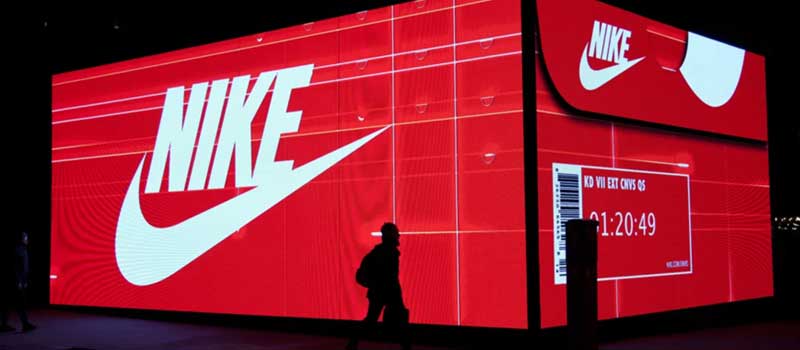Without a doubt, brand positioning is one of the most [if not the most] critical elements in the entire brand strategy.
Many people use brand positioning and other terms, like brand equity, interchangeably. But unlike your brand equity, which is the value of your company name in the marketplace, brand positioning aims to place your company name in the mind of your target audience for a very specific reason — to help them distinguish your brand from the rest.
No matter which industry you’re operating in, it’s probably a noisy place full of competitors all vying for the attention of your shared audience.
You can’t just expect your audience to understand why they should choose your brand over a competitor’s; you need to help them make that discovery.
Your Audience Positions Your Brand

As much as your brand attempts to influence where your audience places your brand within their mind, ultimately, that’s something your audience does by themselves.
Based on their brand awareness, experiences, circumstances and, of course, exposure to your messages, they’ll decide where your brand fits and whether or not it’s relevant to them.
Therefore, your positioning strategy aims to influence how your audience perceives your brand,
So you can stake a claim for the position you want within their mind. Then, it’s up to you and how you design your customer experience to fulfill your brand promise.
The Goal Of Brand Positioning

Your positioning is a core element that relates to your brand identity — how and when do consumers remember you? The end goal of brand positioning is to own an idea that your audience associates with your brand and your brand alone.
This idea is spawned in the development of your positioning strategy. And once the idea is clear, the supporting elements of your brand strategy, places that idea in your customers’ mind.
Depending on how well your messaging is aligned with your positioning strategy, the idea might land or might not.
So what does that all mean?
Well, essentially, you need to define an idea you want your audience to associate with your brand and work hard on formulating that idea into an easy-to-understand message.
The more simplistic (and unique) the idea, and the more ways you consistently deliver that idea at various touch points through your marketing strategy, the more likely it is your idea will land.
Only a well formulated and clear message delivered consistently will allow the idea to land.
If it does land, your audience will associate your brand with that idea, and they’ll remember you at the moment of truth (the buying decision).
Simple, right?
PRO Brand Strategy BluePrint
Build Brands Like A Pro Brand Strategist

Brand Positioning Definition [Kotler]
![Brand Positioning Definition [Kotler]](https://brandmasteracademy.com/wp-content/uploads/2019/12/Brand-Positioning-Definition-Kotler.webp)
Philip Kotler is thought of as “The Father of Modern Marketing”.
Author of over 80 marketing books and a distinguished professor of International Marketing at the Kellogg School of Management, Kotler is someone you need to listen to when it comes to branding and marketing.
Kotler has defined brand positioning as
“The act of designing the company’s offering and image to occupy a distinctive place in the mind of the target market”
The offer he is referring to is the thing you do differently.
The image is the way in which you communicate that difference to your audience.
Collectively, your offer and your image represent your idea, which is exactly how, you want your brand to be perceived in the market.
Explore Brand Strategy
Programs & Tools
Examples Of Brand Positioning

Tesla

Tesla has positioned itself as the innovative, alternative-fuel vehicle manufacturer that not only provides ecological transportation but does so in style. Tesla has captured an audience with strong core beliefs — and the funds to back these beliefs.
Tesla’s brand vision is “to create the most compelling car company of the 21st century by driving the world’s transition to electric vehicles.”
Amazon

Amazon’s positioning is all about convenience and customer satisfaction. So it’s no surprise that they’ve implemented same-day delivery, among other solutions.
Amazon’s positioning strategy has certainly paid off, resulting in them having roughly half of the market share for e-commerce retail in the US, according to Statista.
Nike

Nike has successfully positioned itself as a high-quality provider of athletic equipment. They innovate and do it well.
Nike’s world-famous tagline, Just do it, generates powerful brand recall on nearly everyone regardless of age and gender.
Developing A Brand Positioning Strategy

The strategy of your brand positioning is the research and development of your idea.
Simply coming up with an idea as to why you’re different doesn’t mean your idea is the right one.
Part of brand management is considering the number of important elements at play during the development of the strategy.
If the positioning of your brand has an end goal it needs to achieve (like staying in the mind of the target market), then the most efficient or effective way to achieve that goal has to be defined.
If a military platoon has an objective for a mission, the commander won’t formulate a plan without considering important information such the location and movement of civilians as well as the strengths, weaknesses and position of the enemy.
When defining a position for your brand in the market, just like a military commander, you need to strategically analyse the important elements at play before formulating a plan of attack.
These elements are critical considerations when defining which position your brand should occupy and the most efficient way to achieve that goal.
The Elements Of Brand Positioning

Your brand positioning strategy consists of three critical elements
They are:
Your Audience
Your Competitors
Your Differentiator
An effective brand positioning strategy is developed through careful analysis of each of these key elements.
Your Audience

The position your brand takes in the market is quite simply to stand out as the best choice for your audience.
In order to be the best choice, you first need to understand what they want. And to do that, you need to get to know them intimately.
They will already have plenty of choices in the market, but there will always be something different, faster, safer, more efficient, cheaper, more complete or more convenient that will appeal to them. This is your value proposition. This competitive advantage sets you apart from the noise.
In other words, if your ideal consumer thinks of McDonald’s as a quick, convenient treat and you happen to want to take that spot, your goal is to position yourself as an easier, more convenient, perhaps more health-conscious fast-food alternative.
If your offer and image (your idea) provides an appealing alternative to the options they already have in the market, your brand has a chance of claiming a unique place in the mind of your audience.
Your Competitors

Your competitors are the existing choices your audience already has.
Through their offer and image, they populate the marketplace with solutions your audience has to choose from.
Analysing your competitors is not an exercise to find what’s working well in order to replicate it.
That would result in your brand simply offering more of what’s already available and contributing to market noise.
In other words, that’s the best way to blend in.
Your competitors will have a variation of offers and images that will appeal to different segments within your market.
Some may be cheap while others are expensive. Some may be comprehensive while others are convenient. Some may be fast while others are efficient.
Market research allows you to discover where you fit in — or stand out to your target customer. When you know your competitors, their offers, their images, their strengths and their weaknesses, you have a clear understanding of what’s available to your audience.
From here, you’re much better placed to uncover opportunities.
Your Differentiator

Your differentiator is the cornerstone of your positioning strategy.
Once you understand who your audience is and what they want…
And you also have clarity on who your competitors are and what they offer; you can identify existing gaps your brand can fill.
How To Create A Unique Brand Position

Finding a unique gap in the market is a creative game.
Gaps aren’t sitting out in the open like a beautiful untouched patch of grass on a hill that others have simply left open for you.
It’s not that easy.
Unique gaps are created from… you guessed it… an “Idea”.
Your differentiator, therefore, is not found. It’s created.
To build a successful brand, you need to know who your audience is. What they like and dislike and how they feel about the problems they have.
You need to know your competitors and the positions they occupy in the mind of your shared audience in order to identify the gaps.
Once you have these ingredients, with a little creativity, you can create a differentiator that didn’t exist before and earn your market share.
If your research was comprehensive enough and your differentiator creative enough, your audience might just create a new position in their mind just for your brand.
A Brand Positioning Map / Perceptual Maps

A brand-positioning map is a graphical chart that allows you to visually analyse the strengths and weaknesses of your competitors.
By placing two attributes of the product/service you offer on a map, you can then plot where your competitors sit based on their perception in the market.
For example, for a car brand, the audience might consider both price and quality.
With the vertical line representing price (both high and low prices), and the horizontal line representing quality (both high and low quality), you can place your competitors on the map giving you a snapshot of the marketplace.
This, of course, is an oversimplified explanation of the positioning map.
You would need to get a lot more granular with your audience’s demographics and buying considerations to point you in the right direction of something unique.
The positioning map, though, is a great place to start understanding the market conditions and identify possible gaps.
The Brand Positioning Process
STEP 1:
Develop Your Audience Persona

Develop your Audience persona so you have an intimate understanding of who they are.
Understanding their pain-points and associated emotions provide invaluable insights to create a unique differentiator.
STEP 2:
Analyse Your Competitors

Use a positioning map to plot all your relevant competitors to get a broad understanding of your market.
Consumers’ perceptions are vital when it comes to your own positioning, so step into your audiences’ shoes and analyse the options they have in the market, where they’re satisfied and where they’re not.
STEP 3:
Define Your Differentiator

Using your previous analysis, look for gaps in the market that your brand might fill.
Where your audience is not satisfied, see if you can dig deeper and create a unique offer that will provide a unique value and satisfy a relevant pain point.
Defining your differentiator is a creative game so the most effective results happen outside the box.
The Brand Positioning Statement

The brand positioning statement an internal statement developed to guide the brand.
It’s designed to distill the positioning strategy into a clear and concise message that guides the development and ongoing management of the brand.
Despite the fact that many brands choose to communicate their brand positioning statement externally within the marketplace, it is designed as an internal guide first.
The statement defines the critical elements of the brand’s position that must be communicated with the intended audience.
These elements are:
The Audience
The challenge / pain-point
The Key Benefit
Competitive Alternative
Point of Difference
Defining these five elements allows a brand to be crystal clear about who they aim to help and why their audience should choose them over the alternative options in the market.
If this statement is used to shape the development of the entire brand strategy, it will result in a brand that is clear about why their audience should remember them.
This is the idea you plant in the mind of your audience and this is the goal of your brand positioning strategy.
Conclusion
Are you building a brand now or in the future?
Do you know the position you want to take in the market?
Will you use all or any of these steps to formulate your plan?
Let me know by leaving a comment below Right Now!
On-Demand Digital Program
Brand Master Secrets
Make the transition from hired-gun to highly valued brand strategist in less than 30 days. The systems, frameworks and tools inside this comprehensive program are all you need to level up.









Great Article Thank you so much, Really Appreciate it, I really want to know what is the difference between Brand Positioning statement and Brand Purpose, Mision, Vision Statment? Thank you so much really appreciate it!
Very different > Positioning relates to the reason you give your clients to choose your brand > It guides all communication… the other 4 are specific internal statements designed to guide decisions and actions